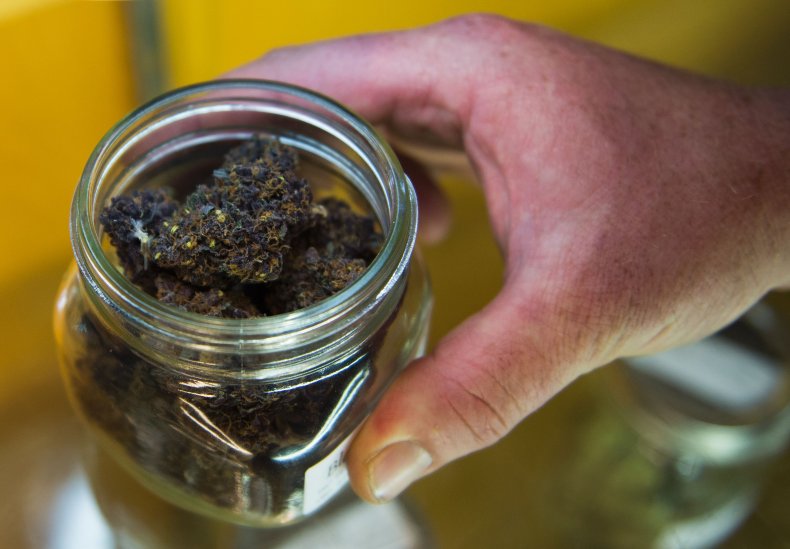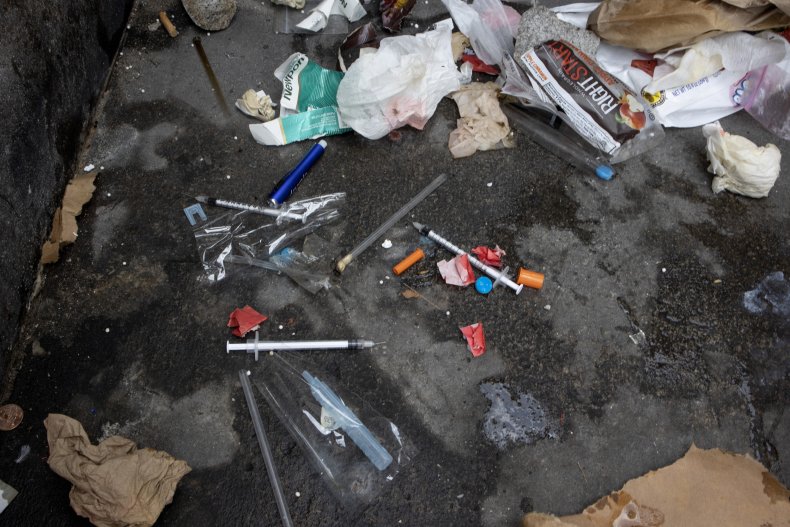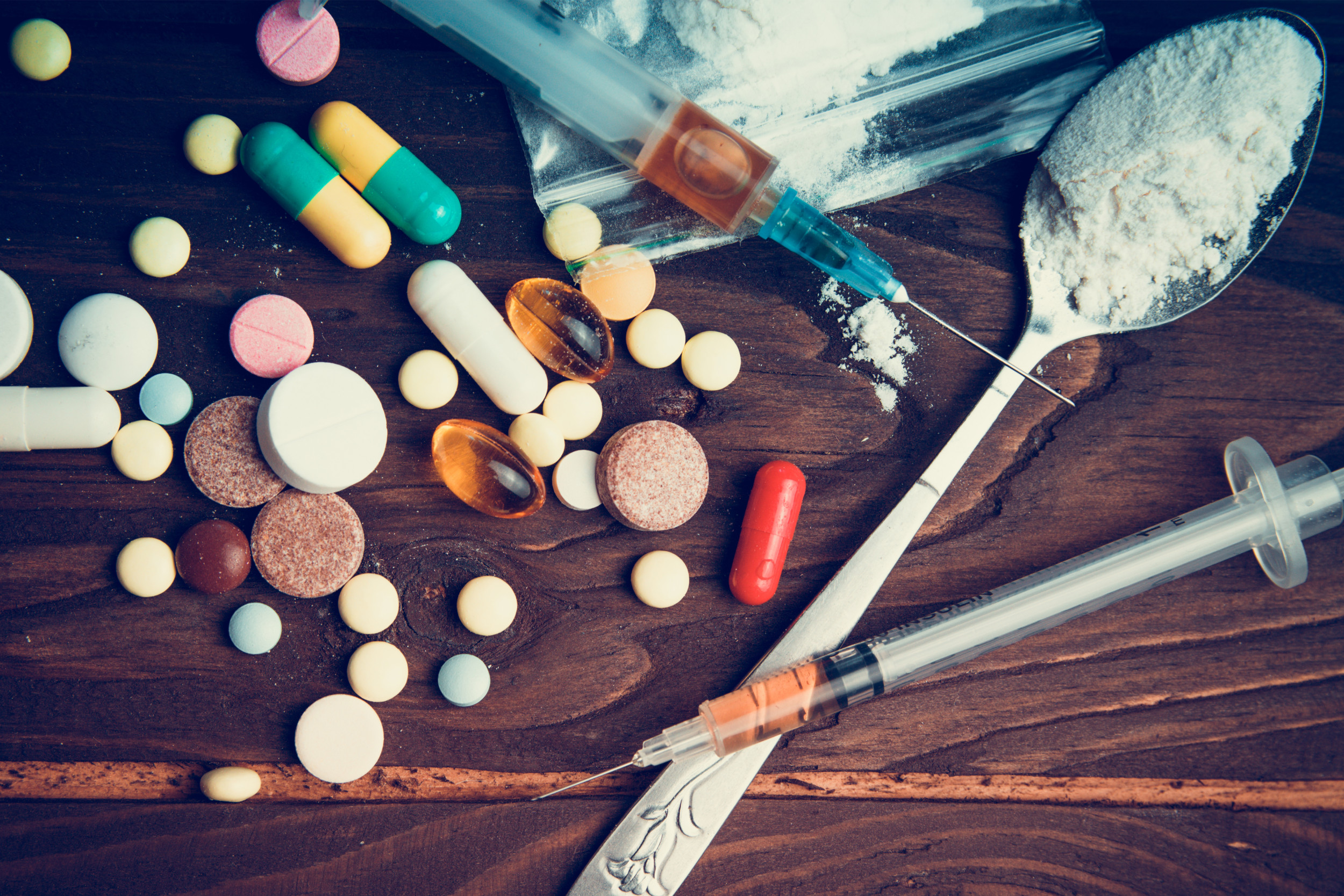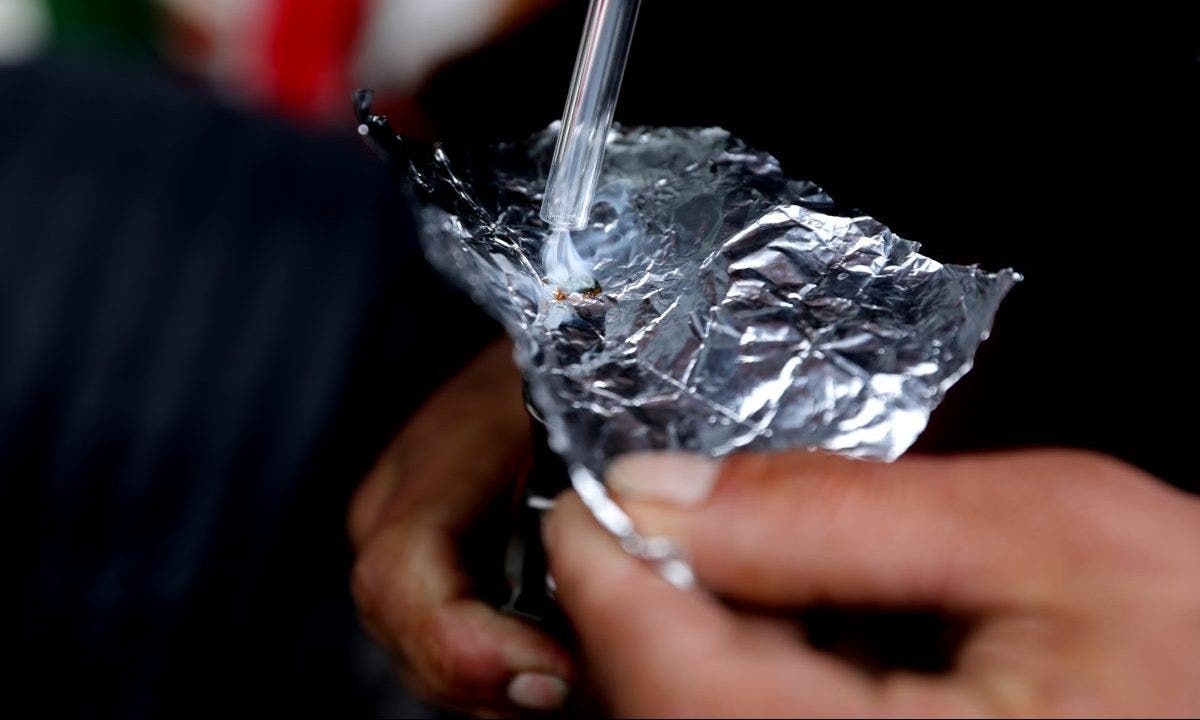- Washington nearly became the second U.S. state to decriminalize all drugs recently, following Oregon, which did so in 2021.
- There are also pushes at a national level for America to decriminalize drugs.
- Stakeholders disagree over how the policy might best be implemented though.
- A federal policy could bring benefits, but also health and law enforcement concerns, experts told Newsweek.
Drug decriminalization, for just a moment last month, appeared to have been making itself at home in the American Northwest—raising questions once again as to what the country might look like were it to permit possession.
A temporary law in Washington state that had made drugs illegal was due to expire on July 1, in effect making possessing any drug no longer a crime. Lawmakers only approved a new drug policy about six weeks before the deadline.
Neighboring state Oregon decriminalized possession of small quantities of all drugs in 2021, and 31 states, including Washington, have already decriminalized marijuana to varying degrees. Distributing other drugs remains a criminal offense.
There are now calls for a national decriminalization policy. A bill handed to Congress in 2021—which will be reintroduced next month—would end criminal penalties for drug possession, and invest in public health and support programs.
Getty Images
Advocates argue decriminalizing drugs can help tackle the more than a million drug-related arrests a year in the United States, and move policy from punishment to treatment. Marianne Williamson, a Democratic presidential candidate, is among those pushing for such a change at a national level.
How a decriminalized nationwide policy might operate is an open question, and stakeholders offer conflicting accounts of how it would best be implemented, even in the context of pre-existing models. There are tensions over how to fund recovery treatments, and whether that funding should come before a move to decriminalize.
Many view Portugal, which decriminalized personal use of all drugs in July 2001, as a shining example of a country that has successfully implemented the move. But there are criticisms of how both Oregon and Portugal have done so that might influence a national policy.
It is as yet unclear what impact on drug use Oregon’s new law has had, but the legalization of marijuana has led to a record number of users.
Depending on how America might decriminalize drugs, some experts have raised concerns about the potential impacts of such a policy on law enforcement and the proliferation of new, illicit substances. But others say the current situation isn’t working in either regard.
What Might a Decriminalized System Look Like?
Current decriminalization policies are typically twinned with stepped-up treatment pathways. The arguable benefit of decriminalization is fewer drug-related arrests and less stigma, but an adequate recovery system is needed to stop drug use and related harms from spiraling.
The proposed federal Drug Policy Reform Act 2021 argued that “harm reduction services and voluntary, on-demand access to evidence-based substance use disorder treatment have proven highly effective in reducing overdose and the spread of communicable diseases.”
It called for possession of controlled substances deemed a personal amount to be decriminalized, but at the same time for the Secretary of Health to establish a grant program for expanding access to substance abuse treatments, harm reduction programs (such as overdose prevention) and pre-arrest diversions towards support.
Mike Shanahan, communications director for New Jersey Democratic Representative Bonnie Watson Coleman, who originally put forward the bill, told Newsweek it was scheduled to be reintroduced in July.
He said that the current system “has not been effective” and explained the act would move the job of tackling drug use “from a criminal justice issue to a public health issue including to shift regulatory authority from the Justice Department to the Department of Health and Human Services.”
While the Drug Policy Reform Act gives the clearest picture of what a federal decriminalization policy could look like, it is uncertain how much it would cost to implement and how it would be funded; a Congressional Budget Office review of the policy has yet to materialize.
But Oregon, on a state-wide scale, has implemented a similar policy with a novel funding model. There, tax revenues from cannabis sales have been used to finance its new drug treatment pathways, with further funding expected from savings in the criminal justice system—something other states that have legalized marijuana could, in theory, replicate.
For this funding model to hold at a national level, the U.S. would have to legalize marijuana—making it a regulated product, rather than one that merely does not carry a criminal penalty for possession—to then tax it for recovery treatments, unless savings in the criminal justice system cover those expenses.
Kevin Roy, chief public policy officer at Shatterproof, an addiction charity, expressed concern, though, that using proceeds from drug sales to pay for drug treatment “can’t help but shape your perspective on the risk of using cannabis.” In 2022, 19.3 percent of those aged 12 and over in Oregon used marijuana, according to public health figures, above the U.S. average of 11.7 percent.
But Matt Sutton, public relations director for the Drug Policy Alliance (DPA), a New York-based pro-decriminalization think tank that lobbied in Oregon, disagreed with Roy’s reading of the policy. He said that tying recovery pathway funding to the marijuana tax had been “very successful,” whereas “there just wouldn’t have been the same momentum to fund those services” if voters had considered a measure using mainstream tax revenue.
Sutton noted that Oregon had legalized cannabis in 2014 and was generating millions of dollars a year in tax revenue from sales of the drug, and so the tax pre-existed decriminalization. He told Newsweek that campaigners saw it as an “opportunity” to use the money “that no one really counted on” having.
There is also a tension among experts over whether or not decriminalization should precede an overhaul of treatment pathways, speaking to a wider debate about prioritizing lower incarceration rates or improved recovery outcomes, and illustrated by a difference in the implementation of Oregon’s decriminalization model and that of Portugal.
“Portugal decided they were going to decriminalize drugs and spent two years distributing funds and building an alternative pathway that included consequences and repercussions… then they started decriminalizing drugs after they had built out that system,” Mike Marshall, executive director of Oregon Recovers, an advocacy group, told Newsweek.
“We did the opposite: we simply stopped arresting people, and then have spent three or four years trying to build somewhat of an alternative intervention system.”
He argued that Oregon “didn’t do anything to move the dial in increasing access” to what he described as “traditional” forms of treatment, adding: “So we passed a law that would in many respects drive people into the system, but we didn’t do anything to improve the system.”
The Oregon Health Authority survey found there was a 49 percent gap between treatment service supply and estimated demand, with more than half of providers citing a lack of capacity. Newsweek approached the Oregon governor’s office for comment via email on Wednesday.
Across the U.S., a 2020 report by the Substance Abuse and Mental Health Services Administration (SAMHSA) noted that while the number of facilities overall had increased by 20 percent between 2010 and 2020, private non-profit facilities had decreased by 8 percent—suggesting it may have become harder for drug users on low incomes to seek treatment. State and local governments treated just 6 percent of all users, while the federal government treated 3 percent.
“If we’re not going to build a robust prevention system and treatment system, decriminalizing drugs is just lighting a barrel of gunpowder and then us all being surprised when it blows up,” Marshall said.
Roy told Newsweek that Portugal “had the investment in their treatment ecosystem to make the requirement to get treatment actually effective and plausible—and so for a state to try this, you really need to have a sufficient number of treatment facilities and treatment providers, and sufficient number of care coordinators.”
He added: “Unless we’re positioned to do that, which we’re not today, it would not make a lot of sense to pursue that kind of open policy.”
Sutton agreed that recovery services were “vastly underfunded” in the U.S., but argued there would be more funding for them under a decriminalized system. In Oregon, decriminalization has funded more than 16,000 appointments in the first year, according to DPA figures.
He added that waiting for treatment pathways to improve without decriminalization was not a “realistic scenario,” saying it also provided less stigma for users seeking treatment.
“Involvement with the criminal legal system just creates more barriers in people’s lives, creates more trauma, and makes it more difficult for them to access the services they need to attain recovery,” Sutton said.
“Drug arrests and the drug war in general has disproportionately targeted communities of color,” the decriminalization advocate noted, pointing to a “huge net positive” of Oregon’s estimated 95 percent reduction in racial arrest disparities.
The Drug Policy Reform Act would decriminalize drugs 180 days after its passage, while a grants program is stipulated to be established one year after—suggesting an interest at a federal level in lowering incarceration rates.
Once a national policy is set, the finer points of how it is implemented have a significant bearing on how drug users may be treated.
The Effect on Drug Users
The proposed 2021 Act would eliminate various legal consequences for drug possession convictions, including those around federal benefits, housing benefits and the removal of drivers’ licenses.
However, the language leaves open how the new system would treat users in terms of pushing them towards treatment—something other models already in place have done in varying ways. Were America to decriminalize drugs, it would have to choose between these strategies.
In Portugal, while a person found in possession of a personal amount of drugs cannot be imprisoned, users are compelled to appear before a local commission—comprised of legal, health and social workers—whose primary role is to ensure the health of the individual and dissuade them from further drug use through referrals to treatment programs.
Failure to attend treatment when ordered is subject to administrative sanctions such as fines or community service.
“One of the challenges in terms of states in the U.S. trying to implement policies that look like Portugal is often a misunderstanding of what they’ve actually done,” Roy said. “In Portugal, there’s a really heavy emphasis—social and legal—on people seeking treatment and reducing drug use. That’s a goal, and I’m not sure that’s been really clear as people talk about decriminalization in the U.S.”
In Oregon, there is currently no recourse for treatment non-attendance. Instead, those given $100 fines for drug possession violations can avoid paying them if they can prove to a court that they have completed an assessment to be directed towards relevant treatment.
Marshall said that while Portugal’s system was “predicated on that notion that people respond to consequences,” in Oregon it was “entirely voluntary for people who aren’t necessarily making the sound decisions for themselves.”

ANDREW CABALLERO-REYNOLDS/AFP via Getty Images
But Sutton said Portugal’s model created “no more of a deterrent” than Oregon’s, noting that in many Portuguese cases, sanctions were never carried out. A 2013 report found that 83 percent of addiction commission rulings resulted in a temporary suspension, with just 12 percent being punitive.
“Ultimately, we want people to go into the services because they want the services, because that’s when we know they’ll be the most effective,” he added.
How a U.S. decriminalization system is set up for users also hinges on whether it means they are less likely to face criminal charges for drug offenses.
Despite drug-related arrests dropping from 14,000 a year to around 5,000 a year after decriminalization in Portugal, according to a 2011 paper, one academic study in 2021, supported by the Portuguese government, found that since 2009 there had been an increase in criminal sanctions for possession over the 10-day individual use amount allowed.
Sutton noted that what counted as a personal use amount was far lower in Oregon—around 1-2 days’ supply—suggesting dependent users were more likely to face sanctions, and demonstrating that wherever a federal benchmark for personal use may be set could have vastly differing implications for regular drug users.
There was an approximate 60 percent decrease in drug-related arrests in the first 10 months after decriminalization in Oregon versus the same period the year before. Incarceration rates have also fallen. However, as Portugal shows, the long-term effects remain unclear.
As a relatively new policy, it is too soon to tell what impact decriminalization in Oregon is having on drug use in the state—and therefore how this might map to the rest of the country.
However, as more states have decriminalized marijuana, more people are using the drug than since monitoring its usage started in 1988. The proportion of those aged 19-30 across the U.S. using cannabis has risen from 34 percent in 2016 to 43 percent in 2021.
To some, this may suggest that further decriminalization in the U.S. would only lead to greater drug use.
Roy warned that the rise in prevalence of marijuana was changing the perception of its risks—especially among younger people. He cited a May 2023 study that found cannabis use was “significantly associated” with adverse psychosocial issues among adolescents.
A 2019 EU report estimated consumption of marijuana—Portugal’s most frequently-used drug—had trended upward between 2012-2017, but use of other drugs such as cocaine and ecstasy had continued to trend downward, suggesting wider decriminalization may not influence cannabis use.
“The vast majority of Americans would agree that we should have marijuana legalization; I don’t think that’s really a huge issue at this point,” Sutton remarked.
He added that a regulated marijuana market made selling to minors harder, and that when “people are going to use drugs regardless,” an awareness of the risks of drug consumption “just makes the case” for decriminalization.
“The people that are selling drugs in an unregulated market, they’re not doing any kind of quality control, or labeling, or anything that is going to make the consumer more aware of what they’re consuming,” Sutton said.
The Effect on Drug-Related Issues
While the impacts on drug users is key to understanding what a decriminalized U.S. might look like, it is only part of the picture. There are also questions as to how decriminalization would affect drug-related crime and, to that end, law enforcement.
“I’m handling a case right now as an expert for the family, where a young man who the family couldn’t handle was on the street when he should have been receiving intensive care, mental health care, and police shot him down and killed him,” Michael Levine, an expert trial witness and former Drug Enforcement Agency (DEA) undercover specialist, told Newsweek.
“That kind of scenario, I believe, is going to increase significantly [if drugs were decriminalized].”
He said that there were many cases in which a family “couldn’t handle” a drug user, and therefore called the police, who in some cases resorted to lethal force. In 2022, 6.4 percent of use-of-force cases started with a mental health or welfare call, FBI data shows, though how many of these calls were drug-related is not given.
“I worked the streets for 25 years; I’ve seen what completely out of control, addicted people do,” Levine, who also spent four years as a special agent for the Bureau of Alcohol, Tobacco & Firearms, remarked. “And it’s very bad, extremely bad, and you have to expect a significant increase in police-involved shootings.”
A decriminalization advocate might argue that treatment pathways funded by such a drug policy could help prevent these incidents from occurring by helping more of those in serious need of support. Sutton said it was “very easy” at present to “drag more money towards law enforcement to crack down on people who are using drugs.”
There are also early signs that cannabis decriminalization could be facilitating the rise of new drugs, which health workers and law enforcement alike are struggling to cope with.

Andrew Lichtenstein/Corbis via Getty Images
In recent years, waves of fentanyl, a synthetic opioid, and now xylazine, a veterinary tranquilizer, have gripped America. Both have provided cheap, if dangerous, substitutes and cutting agents for more expensive opioids on the black market.
One March 2023 study found a potential link between marijuana legalization and higher opioid mortality rates, particularly among younger people, suggesting it was acting as a gateway to harder drugs.
However, another study in 2021 argued there was “some evidence” cannabis legalization may reduce opioid-related deaths. Researchers at DPA said the March 2023 study “does not show causation,” adding: “Increased deaths from fentanyl are not necessarily associated with increased use rates because the drug supply is potent and unpredictable.”
“Drugs you and I have not heard of will become used,” Levine warned of decriminalization. “There is no end to the inventiveness of people using and selling and buying drugs.”
Newsweek approached the DEA via email for comment on June 1.
An undercover operative as part of Operation Trifecta, Levine recalled dining with drug lords in the Panamanian jungle. “What they told me, very frankly, was they don’t have any fear of law enforcement,” he said. “What they have fear of is some invention, some drug that will take away the market of cocaine. They’re still in business, but there are many other drugs now in business, and I think that is a harbinger of the future.”
Sutton concurred that drug dealers could be “very innovative,” but attributed the current fentanyl and xylazine epidemics to U.S. government crackdowns on opioids and illicit prescription medications in recent years.
He referenced a study, published on June 7, that showed an increase in overdoses in an area shortly after a drug seizure.
Roy said that not only were there new drugs emerging, but new markets, including an illicit cannabis trade that undercut legal vendors, creating safety concerns.
“What we’ve seen is the opposite of the intended policy with respect to cannabis decriminalization and legalization,” he commented. “Use is up, harms are up by some measure in terms of driving under the influence… and we’ve also not seen reductions in overdoses.” He added: “Going further down that path doesn’t make a whole lot of sense.”
Yet Sutton responded that despite widespread marijuana legalization, drug policy remained rooted in the justice system, which he said in many cases deterred users from seeking help over a fear of facing criminal charges.
“Say you and I were going to use fentanyl, I went out and bought the fentanyl and brought it back to my house for us,” Sutton explained. “I technically delivered the fentanyl to you; if you were to overdose, they could in some states charge me with your death.
“That has a chilling effect on people’s ability to actually access help and to call for help during an emergency.” He added that decriminalization would “remove those barriers.”














